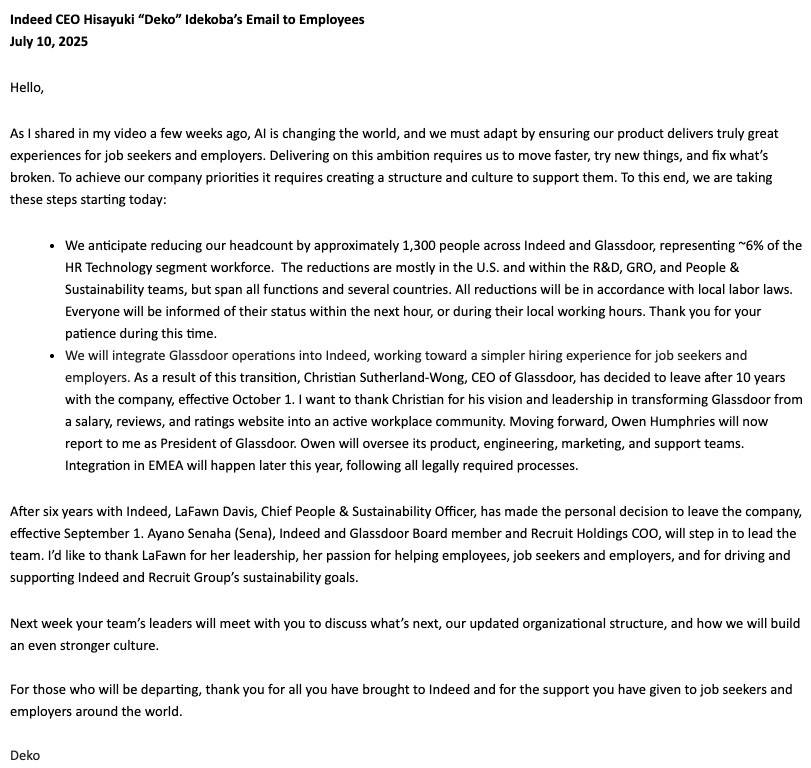Recruit Holdings, the parent company of Indeed and Glassdoor, sent a letter to employees on July 10, 2025 to announce that it is laying off approximately 1,300 people. This represents about 6 percent of the workforce in its HR Technology segment, mostly in the United States.
This marks the third year in a row of significant workforce reductions at Indeed. Recruit laid off 1,000 employees in 2024 and another 2,200 in 2023.
Recruit also announced that Glassdoor CEO Christian Sutherland-Wong is leaving the company and will be replaced by Owen Humphries. Moving forward, Glassdoor’s operations will be integrated into Indeed. This change follows the recent resignation of Chris Hyams as CEO of Indeed. Hisayuki “Deko” Idekoba, CEO of Recruit, has stepped into the role.

The job cuts come even as the HR Technology segment’s revenue in the United States grew by 4.9 percent in the quarter ending March 31, 2025. This growth was in spite of a decline in the number of paid job postings on Indeed, which the company expects to continue through the rest of 2025 amidst a frozen labor market in the United States.
A Shift Toward Monetization
The company’s focus now is on monetization. On the Q3 2024 earnings call, the word “monetization” was mentioned just once. In the most recent call, it came up nine times.
So what does this monetization push actually look like?
For starters, Indeed is tightening its pricing rules. According to the Job Board Doctor, the company is updating its 2023 “Healthy Budget” guidelines to require a minimum spend of $25 per job posting.
First reported by Jim Durbin, Indeed has also begun to phase out agency single-source XML job feeds in favor of its own API. These XML feeds are commonly used by programmatic agencies to post jobs in bulk to Indeed. Replacing them is widely seen as a direct challenge to those agencies—similar to the moves Indeed once made against job boards.
The focus on monetization feels familiar. It reminds me of Monster when the company shifted focus from job seekers toward extracting more revenue from their enterprise customers.
We all know how that turned out.
